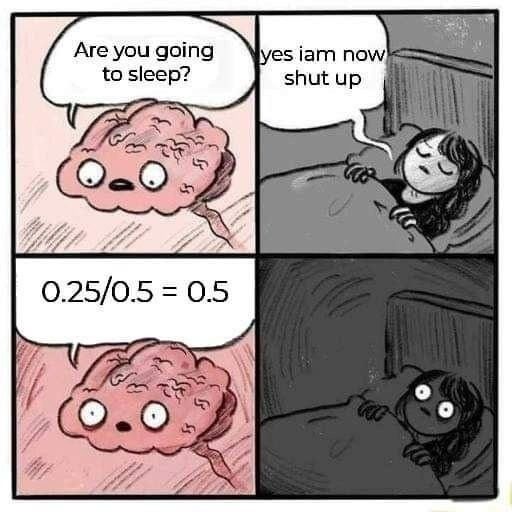this post was submitted on 14 May 2024
434 points (88.5% liked)
Memes
45536 readers
403 users here now
Rules:
- Be civil and nice.
- Try not to excessively repost, as a rule of thumb, wait at least 2 months to do it if you have to.
founded 5 years ago
MODERATORS
you are viewing a single comment's thread
view the rest of the comments
view the rest of the comments

It’s going to be okay:
Edited to add this: Singapore math insists however, that we eliminate the use of visuals in describing arithmetic within the rationals. They encourage that users of common core rely upon the number line, and solely the number line for thorough and most mathematically sound representations of arithmetic, even when involving the division of fractions.
For those not up to speed to with common core, remember how the teacher used to draw a diagram of a bunny hopping from one integer to the next integer to represent adding given integers, such as 4+3, or -2+1? Imagine that representation being used with problems like 1/7 divided by 5/49, and no decimal approximation is allowed. It’s fascinating and truly something to appreciate from the standpoint of someone who truly loves mathematics. I think it makes for great discussions amongst math graduates like myself, and other math enthusiasts. What does that mean for those who are not so enthused? Sometimes it means the teacher receives death threats from angry students. You can’t make everyone happy.
I’m not sure I completely agree with the number-line-only approach, but I’m definitely sympathetic to it. It reinforces the idea that fractions are numbers like any other numbers, and not pieces of pizza.
I get that. I like the number line approach, and respect it, but I have also observed seasoned math coaches fumble the visual explanation of a division by fractions problem where the numerators and denominations were relatively prime. As soon as the guy had drawn the first fraction and began to say, “we’d multiply by the recipro-…”, I could tell it was going to be long problem. He just stood there, and then asked, “well, how would I go about explaining the ‘keep change flip’, if you will?” He ended the problem by saying he might just explain that the distance drawn for the first fraction needs to be repeated on the other side of the fraction to show the multiplication by the denominator of the second fraction, and then that distance could be broken into parts to demonstrate the division by the previous numerator of the second fraction.
Basically he ended the problem by saying, “let’s just reflect it! Then we can break it up.” There wasn’t really a sound justification for the reflection piece of the process, other than saying, “we need to multiply by the reciprocal of the second fraction, so we’ll just have to multiply by its denominator it had, prior to flipping it.”
That was the quietest meeting I have ever seen amongst that group of adults.